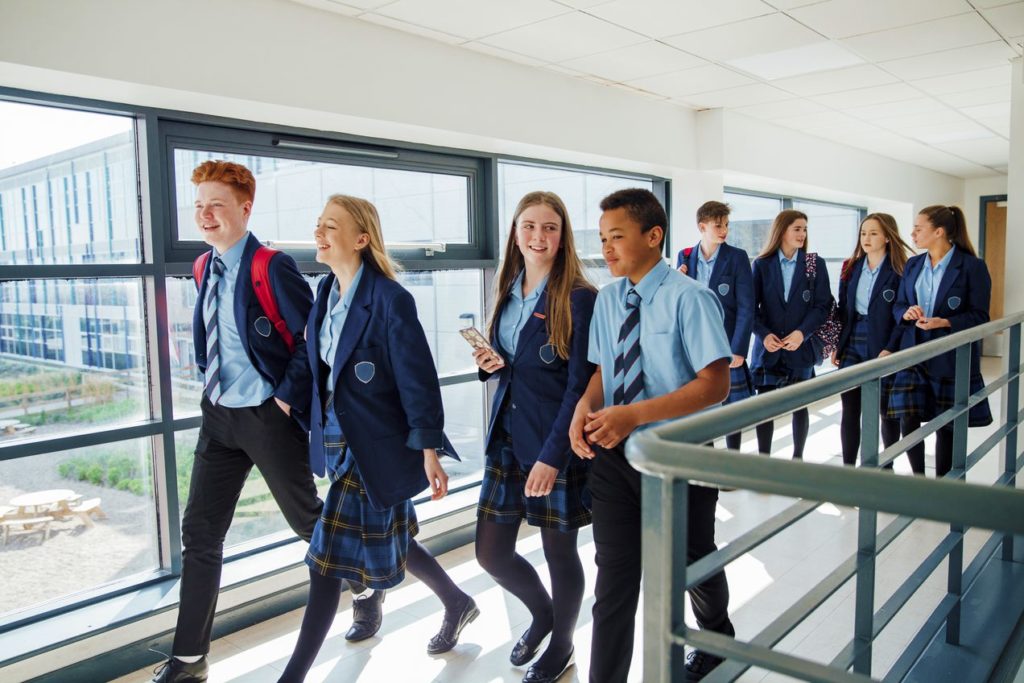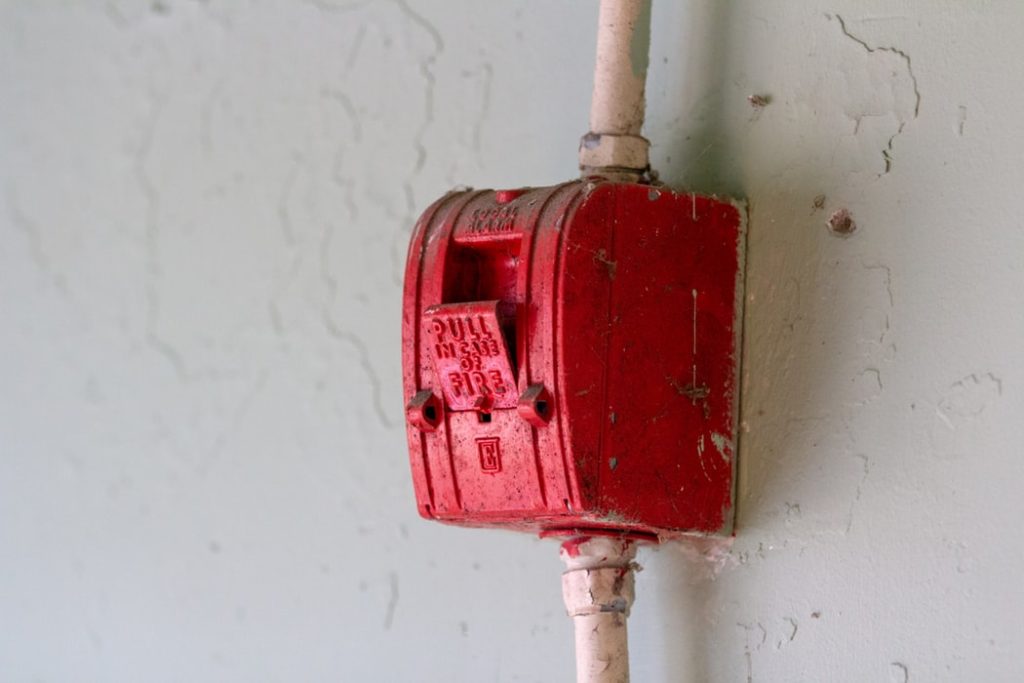Fire safety in schools is vital, not least because large numbers of young people are gathered in one place, meaning the potential for catastrophe is high.
With a recent spate of fires at schools in Scotland, including incidents in Edinburgh, Clackmannanshire and Dunfermline, it’s vital that every school has to take necessary precautions to protect its pupils, staff and visitors in the event of a fire.
Under the Regulatory Reform (Fire Safety) Order 2005, schools must carry out risk assessments to identify the general fire precautions needed. This regulation (RRO) requires that fire precautions be put in place ‘where necessary’ and to the extent it is reasonable and practicable to do so.
The RRO applies in England and Wales, with similar regulation in Scotland. Under the RRO, ultimate responsibility for fire safety rests with the ‘responsible person’ – the individual who has control of the premises (or a degree of control). For schools, this is typically the headteacher or governing body.
How should school leaders mitigate fire risk?
In order for schools to implement effective fire safety measures, they must first understand the potential fire hazards present in their environment and how these are being controlled. This is achieved via a risk assessment.
A fire risk assessment is an organised and methodical look at your premises, the activities carried out, and the likelihood that a fire could start and cause harm to people in and around the buildings.
The aim is to:
- Identify potential fire hazards – specifically sources of ignition (such as electrical appliances) and fuel (any combustible items);
- Consider how to reduce the risk of those hazards causing harm to as low a level as is reasonable practicable; and
- Decide what physical fire precautions and management arrangements are necessary to ensure people’s safety should a fire occur.
Much of the information required by your fire risk assessment will come from the knowledge your staff have of the school premises, as well as from people who have responsibility for your buildings. A tour of the premises will most likely be needed. The assessment should be carried out in a systematic way, taking into account the entire site, including outdoor locations and any rarely used areas.
Your fire risk assessment should be carried out by someone with sufficient training or experience in fire safety. If you require support, our network of qualified Health & Safety Consultants can take on this task for you to give you peace of mind. For hands-on help, call 0345 226 8393.
How do I conduct a fire risk assessment?
Fire risk assessments can be broken down into five key components:
Identify potential hazards
Determine who's at risk
Evaluate, reduce, remove and protect from risk
Record, plan, inform and train
Review and revise as needed

Following assessment, your responsible person will need to:
- Tell staff about the identified risks;
- Put in place and maintain appropriate fire safety measures;
- Make sure staff and pupils are familiar with emergency evacuation procedures; and
- Regularly review the fire risk assessment.
How often should fire risk assessments be reviewed?
In order to remain effective, fire risk assessments must be kept up to date. It is recommended that your responsible person completes a fire risk assessment at least once a year, and you must conduct a review whenever there is a significant change in the environment.
Fire precautions must also remain adequate and current; they must be maintained and should be reviewed in detail when significant alterations are made to premises.
What fire safety precautions should school leaders take?
There are three categories of basic fire precautions that schools should consider:
Passive fire precautions, such as ‘fire-rated’ doors, are those that delay the spread of fire and smoke through buildings. They also protect buildings from early collapse.
Passive protection is the bedrock of fire safety. High-risk areas, such as school kitchen facilities, should be separated from the rest of the school by fire doors with longer resistance time. Standard resistance fire doors may be suitable for long corridors provided they are capable of restricting the passage of smoke. The protective integrity of these barriers (usually 30, 60 or 90 minutes) must be maintained.
Fire doors
The importance of properly rated, installed and maintained fire doors cannot be overstated. Remember, maintaining your fire doors may well turn out to be a lifesaver. All doors should be checked regularly to ensure seals and hinges are in good working order. If a door does not independently close, then it will require quick attention as it is no longer effective.
The role of staff
Training in the importance of keeping fire doors shut and unobstructed is also recommended for staff and pupils alike. Encourage staff to report any damage to barriers, signage removal, etc.
NB: All staff should be responsible for maintaining a high standard of fire precaution in areas under their control or influence.
Active precautions refer to systems that detect fire or smoke and slow the growth of the fire.
Available measures include:
- Early warning systems, such as smoke detectors.
- Manual fire suppression, such as fire extinguishers.
- Automatic fire suppression, such as water mist systems or sprinklers – fully automated sprinkler systems can minimise the damage caused by fire.
Sprinklers are the only fire safety system that can detect and suppress a fire, and raise the alarm. Suppression and sprinkler systems can be difficult to retrofit to older buildings but should be considered.
Shocking 2019 figures released by the London Fire Brigade show that of 57 fires it attended in schools, none had had sprinklers fitted. The brigade believes sprinklers should be mandatory in new school builds and that all existing schools should have them retrofitted during major refurbishment.
School holidays
Sprinklers are especially important in the summer holidays, when fires in empty buildings can smoulder undetected, causing extensive damage. Meanwhile, as schools are unoccupied for long periods, they are quite often subject to arson attacks.
Fire safety management provides a link between passive and active measures.
The RRO requires your fire safety management system to include evacuation planning and safety drills. Your responsible person should:
- Prepare an evacuation plan;
- Appoint fire marshals to help carry it out; and
- Arrange fire drills to practice procedures.
Specific arrangements must be made to ensure pupils and visitors, on hearing the alarm, leave buildings in a calm and orderly manner. For those with disabilities, arrangements must be in place to provide assistance.
Everyone must be directed to a designated assembly point. This must be outside of school premises, clearly marked and easily identified by anyone expected to be in school.
It is essential that fire marshals make a sweep through premises to ensure nobody remains in the building.
What training do staff require?
The RRO states that staff must undergo suitable and sufficient fire safety training.
- Training should include basic fire safety matters, such as what action to take on discovering a fire or hearing the fire alarm.
- Enhanced training should be given to personnel who are to act as fire marshals or use provided fire extinguishers.
Fire drills are critical in all circumstances. They should be carried out at least once a term and at different times of the day. You should assume a fire has occurred in a particular place and that one or two escape routes are affected as this will force people to react to changing circumstances.
Attempts to fight a fire must always be secondary to life safety – any attempt must be based on the circumstances and degree of training received.
It is important to maintain a ‘fire log book’ where all training and testing is recorded. Maintaining such records is not explicitly required by RRO, but is a simple way to prove compliance with the law to the enforcing authority.
How should evacuation be managed?
Someone should have overall responsibility for evacuation, ensuring:
- Roll call is conducted immediately after people have assembled;
- Your attendance register and visitor book are held at a central point and brought to the assembly point when alarm sounds; and
- An assembly count is conducted and checked against your attendance register and visitor book to confirm everyone is outside premises and that no-one remains unaccounted for, including visitors/contractors.
During the first week of term, all new entrants should be shown your school’s primary escape routes and receive instruction on your fire evacuation routine.
Where should all of this information be recorded?
In addition to your evacuation plan, your school should have a fire safety policy that includes:
A brief outline of the relevant regulations and available guidance.
A ‘Statement of Intent’ regarding fire safety.
The name of the person with allocated responsibility for fire safety.
Your fire safety arrangements, including preventative maintenance of fire safety systems.
Your fire safety training policy for staff on induction, including employees required to perform extra duties such as fire marshals/wardens.
Your fire evacuation arrangements.
Means for calling the fire and rescue service.
The specific role of the fire marshal in the evacuation plan and firefighting within premises.
Specific arrangements for evacuating people with disabilities.
Arrangements for signing visitors in and out of school.
To help you carry out a fire risk assessment and identify the necessary general fire safety measures, the government has produced a fire safety assessment guide for educational premises.
Health & Safety support from education specialists

Fire can have a devastating impact on staff, students and parents alike, from loss of work to the disruption of relocating premises, not to mention the potential for serious injury.
With so much at stake, receiving competent support to help you manage risk is essential.
Ellis Whittam’s specialist Education Team work with education providers to implement our four-pillar approach focused on keeping both staff and pupils safe. We provide dedicated Health & Safety Consultants who will support you with all aspects of health and safety management, including fire safety. We will help you to take a proactive approach to keeping staff and pupils safe by conducting a thorough risk assessment of your premises, advising on practical risk-reducing solutions, and creating a robust Health & Safety Policy to provide direction and keep your school compliant.






